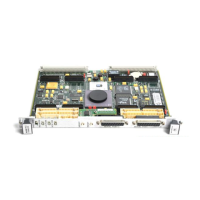3-2 Computer Group Literature Center Web Site
162Bug Firmware
3
162Bug includes:
❏ Commands for display and modification of memory
❏ Breakpoint and tracing capabilities
❏ A powerful assembler/disassembler useful for patching programs
❏ A “self-test at power-up” feature which verifies the integrity of the
system
In addition, the TRAP #15 system calls make various 162Bug routines that
handle I/O, data conversion, and string functions available to user
programs.
162Bug consists of three parts:
❏ A command-driven user-interactive software debugger, described
in this chapter. It is referred to here as “the debugger” or “162Bug”.
❏ A command-driven diagnostic package for the MVME162P4
hardware, referred to here as “the diagnostics”.
❏ A user interface or debug/diagnostics monitor that accepts
commands from the system console terminal.
When using 162Bug, you operate out of either the debugger directory or
the diagnostic directory.
❏ If you are in the debugger directory, the debugger prompt 162-Bug>
is displayed and you have all of the debugger commands at your
disposal.
❏ If you are in the diagnostic directory, the diagnostic prompt 162-
Diag> is displayed and you have all of the diagnostic commands at
your disposal as well as all of the debugger commands.
Because 162Bug is command-driven, it performs its various operations in
response to user commands entered at the keyboard. When you enter a
command, 162Bug executes the command and the prompt reappears.
However, if you enter a command that causes execution of user target code
(for example, GO), then control may or may not return to 162Bug,
depending on the outcome of the user program.

